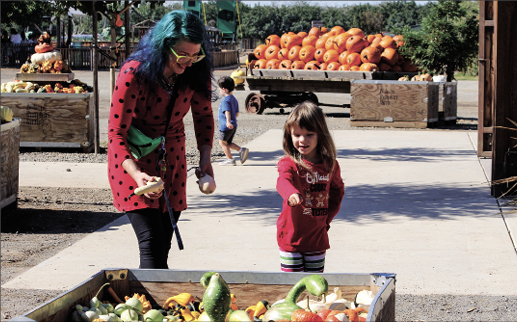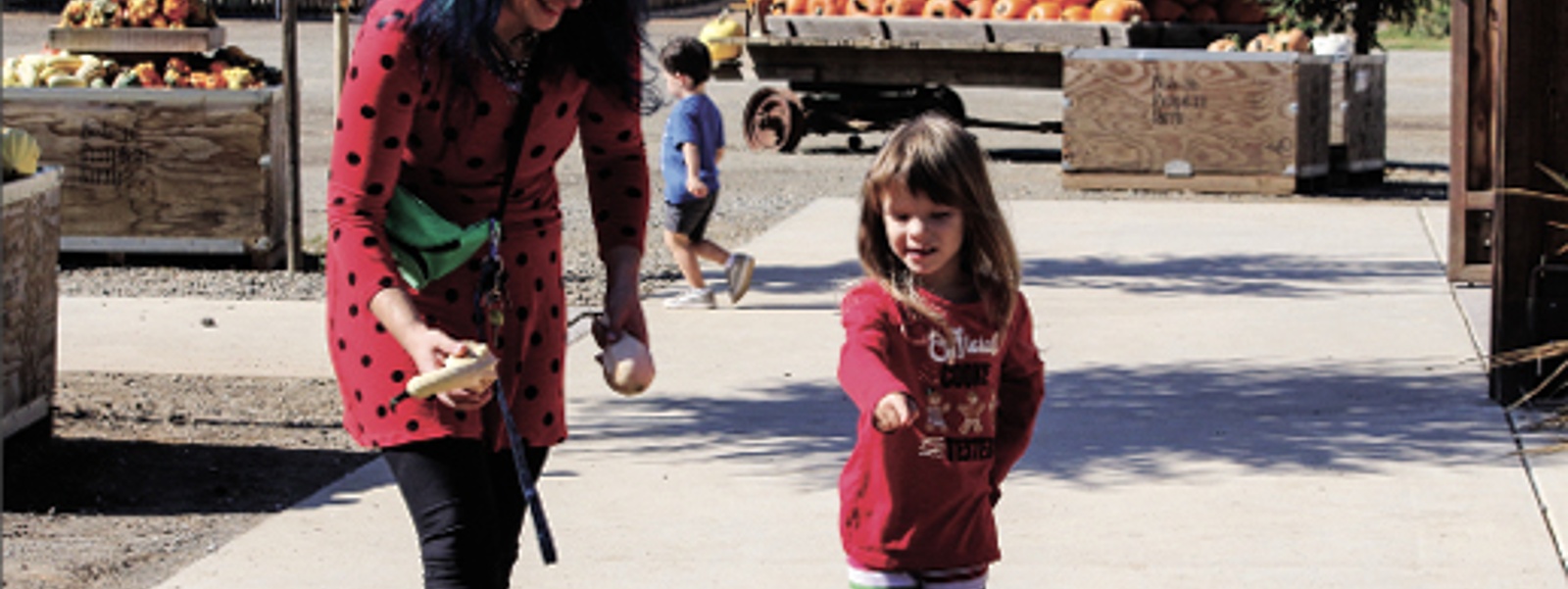Pumpkin patches try to keep crowd surge

With life returning to pre-pandemic normal, operators of pumpkin patches who saw their business soar during the past two years try to sustain momentum as they compete with other entertainment venues amid inflationary pressures.

By Ching Lee
With life returning to pre-pandemic normal, operators of pumpkin patches who saw their business soar during the past two years try to sustain momentum as they compete with other entertainment venues amid inflationary pressures.
Pumpkin patches and other agritourism destinations became more popular than ever during COVID lockdowns, offering outdoor activities for cooped-up families when there was little else to do.
Wayne Bishop, owner of Bishop’s Pumpkin Farm in Yuba County, said some families came to his farm multiple times in one season during the past two years.
“I don’t know if that will hold,” he said. “There’s more options, more things to do now. Maybe they won’t come out as often.”
The challenge to maintain attendance comes as farms grapple with higher operational costs, forcing them to raise prices, which Bishop described as “a scary thing to do.” Not only has the cost of farming gone up, he said—with fuel, fertilizer and labor among the highest—but the cost of key supplies such as butter and eggs used in his bakery has skyrocketed 80% to 90%.
Even though his farm has been open since Sept. 10—among the earliest for pumpkin patches—Bishop said the jury’s still out on what the trend is this year. The heat wave right before opening didn’t exactly “put people in a fall mood,” he noted. Rain spoiled the second weekend. Visitor numbers so far have not topped last year’s, he said, though he described attendance on days with favorable weather as good.
What’s helped is the return of school groups, which typically bring some 20,000 visitors each season, Bishop said. He estimated school bookings at 80% to 90% of pre-pandemic levels. That’s compared to no school trips at all in 2020 and about a third of normal last year.
Also beneficial are the five weekends in October this year, which Bishop said is “as good as the calendar can be” for pumpkin patch operators. The farm sees 12,000 to 15,000 visitors a day on weekends.
Even before the pandemic, pumpkin patches and other farms that open their doors to the public were already shifting to charging admission, said Rachael Callahan, agritourism coordinator at the University of California, Davis. The popularity of on-farm activities during the pandemic gave agritourism operators “the confidence to start charging or increase their prices,” she added, though she noted inflation also plays a role.
“A lot of work and staff resources go into hosting visitors on your farm to ensure that visitors have a safe and enjoyable experience,” Callahan said.
Farmers want to keep their farms accessible for families, she said, but they are running a business. As such, “it’s a delicate balance,” she added, to remain accessible and be compensated for what they do, especially during tough economic times.
Kelly Lester of Sacramento was visiting Bishop’s Pumpkin Farm last week with her daughter Ruby and mother Cindy Bishop, who is not related to the farmer. She said it’s the “cozy feeling” of agriculture in the region and memories of past visits that bring them back every year. The farm offers plenty for her daughter to enjoy and “eating activities for this one and this one,” she said, pointing to herself and her mother.
“It’s also a comfort thing,” Cindy Bishop added. “It’s also tradition, especially during COVID. That’s especially important.”
Since opening his pumpkin patch on Sept. 23, Stanislaus County farmer Ron Macedo, who operates RAM Farms in Turlock, said he’s seen his pumpkin sales increase 10% to 15%. But corn maze participants have dropped 10%. With current gas prices at more than $6 a gallon, he said he thinks people’s disposable income “is being used up” and that his farm may be feeling impacts of inflation.
On the farm, he noted the cost of labor and “supplies across the board” has surged, forcing him to adjust his prices, including on the corn maze and certain varieties of pumpkins.
“You get into that fine line where you price people out of the market too, so you’re trying to walk that tight rope,” Macedo said.
With “extremely good production” on pumpkins this year, he said he’s trying to keep prices low so that he can sell more pumpkins and get people to come to the farm multiple times. Except for the corn maze, attractions are free. He expanded the playground and other areas so they’re “more conducive to parties,” he said.
“The idea is…once they’re here, then they’re either going to buy pumpkins or they’re going to buy from our snack bar,” Macedo said.
With schools feeling “a lot more comfortable” doing field trips again, Merced County farmer Scott Hunter said it’s the first time in two years that he’s filled up his reservations for the season. Still, attendance so far has not been as high as the past two years, he said.
“It’s definitely a little slower start than we’ve had in the past couple of years, but there’s also a lot more activities for people to do,” Hunter said. “There’s competing events, and soccer’s back, and there’s a lot of things going in people’s lives, people back in school.”
Unlike with his almond and pistachio crops, in which he’s a price taker, Hunter said he has more flexibility to pass on the higher costs of the pumpkin patch, “as long as you stay competitive in the marketplace.” He charges $7 admission to the farm, but the fee is applied to the purchase of a pumpkin. This way, “we’re making sure you buy a pumpkin,” he said. “It stops people from using us as a daycare.”
Not all pumpkin patches were able to return to their pre-pandemic level of business. Yolo County farmer Ray Yeung chose not to open the past two years because of the pandemic. He planned on reopening this year and planted pumpkins. But he had trouble finding enough seasonal employees to work the pumpkin patch, so he decided to stay closed for another year.
“It’s hard to get reliable people to come out here to just work four weeks a year,” he said. “You have to prepare; you have to spend several thousand dollars to get everything ready. All it takes is one rain or windstorm” to wreck the season.
All is not lost, he said, as he plans to sell his pumpkins wholesale.
(Ching Lee is an assistant editor of Ag Alert. She may be contacted at clee@cfbf.com.)





